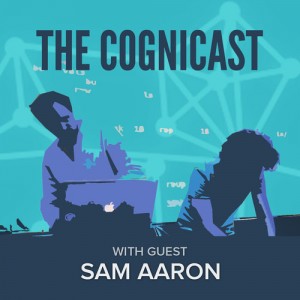Sound, Digested: New Software Tool Provides Unprecedented Searches of Sound, from Musical Riffs to Gunshots
From the post:
Audio engineers have developed a novel artificial intelligence system for understanding and indexing sound, a unique tool for both finding and matching previously un-labeled audio files.
Having concluded beta testing with one of the world’s largest Hollywood sound studios and leading media streaming and hosting services, Imagine Research of San Francisco, Calif., is now releasing MediaMined™ (http://www.imagine-research.com/node/51) for applications ranging from music composition to healthcare.
….
One of the key innovations of the new technology is the ability to perform sound-similarity searches. Now, when a musician wants a track with a matching feel to mix into a song, or an audio engineer wants a slightly different sound effect to work into a film, the process can be as simple as uploading an example file and browsing the detected matches.
“There are many tools to analyze and index sound, but the novel, machine-learning approach of MediaMined™ was one reason we felt the technology could prove important,” says Errol Arkilic, the NSF program director who helped oversee the Imagine Research grants. “The software enables users to go beyond finding unique objects, allowing similarity searches–free of the burden of keywords–that generate previously hidden connections and potentially present entirely new applications.”
Or from the Imagine Research Applications page:
Organize Sound
Automatically index the acoustic content of video, audio, and live streams across a companies web services. Analyze web-crawled data, user-generated content, professional broadcast content, and live streaming events.
Benefits:
- Millions of minutes of content are now searchable
- Recommending related content increases audience and viewer consumption
- Better content discovery, intelligent navigation within media files
- Search audio content with ease and accuracy
- Audio content-aware targeted ads – improves ad performance and revenue
Search Sound
Perform sound-similarity searches for sounds and music by using example sounds.
Search for production music that matches a given track.
Perform the rhythmic similarity searches
Benefits:
- Recommending related content increases audience and viewer consumption
- Music/Audio licensing portals provide a unique-selling point: find content based on an input seed track.
- Improved monetization of existing content with similarity-search and recommendations
And if you have a topic map of music, producers, studios, albums, etc., this could supplement your topic map based on similarity measures every time a new recording is released, or music is uploaded to a website or posted to YouTube. So you know who to contact for whatever reason.
A topic map of videos could serve up matches and links with thumbnails for videos with similar sound content based on a submitted sample, a variation as it were on “more of same.”
A topic map of live news feeds could detect repetition of news stories and with timing information could map the copying of content from one network to the next. Or provide indexing of news accounts without the necessity of actually sitting through the broadcasts. That is an advantage not mentioned above.
Sound recognition isn’t my area so if this is old news or there are alternatives to suggest to topic mappers, please sing out! (Sorry!)

